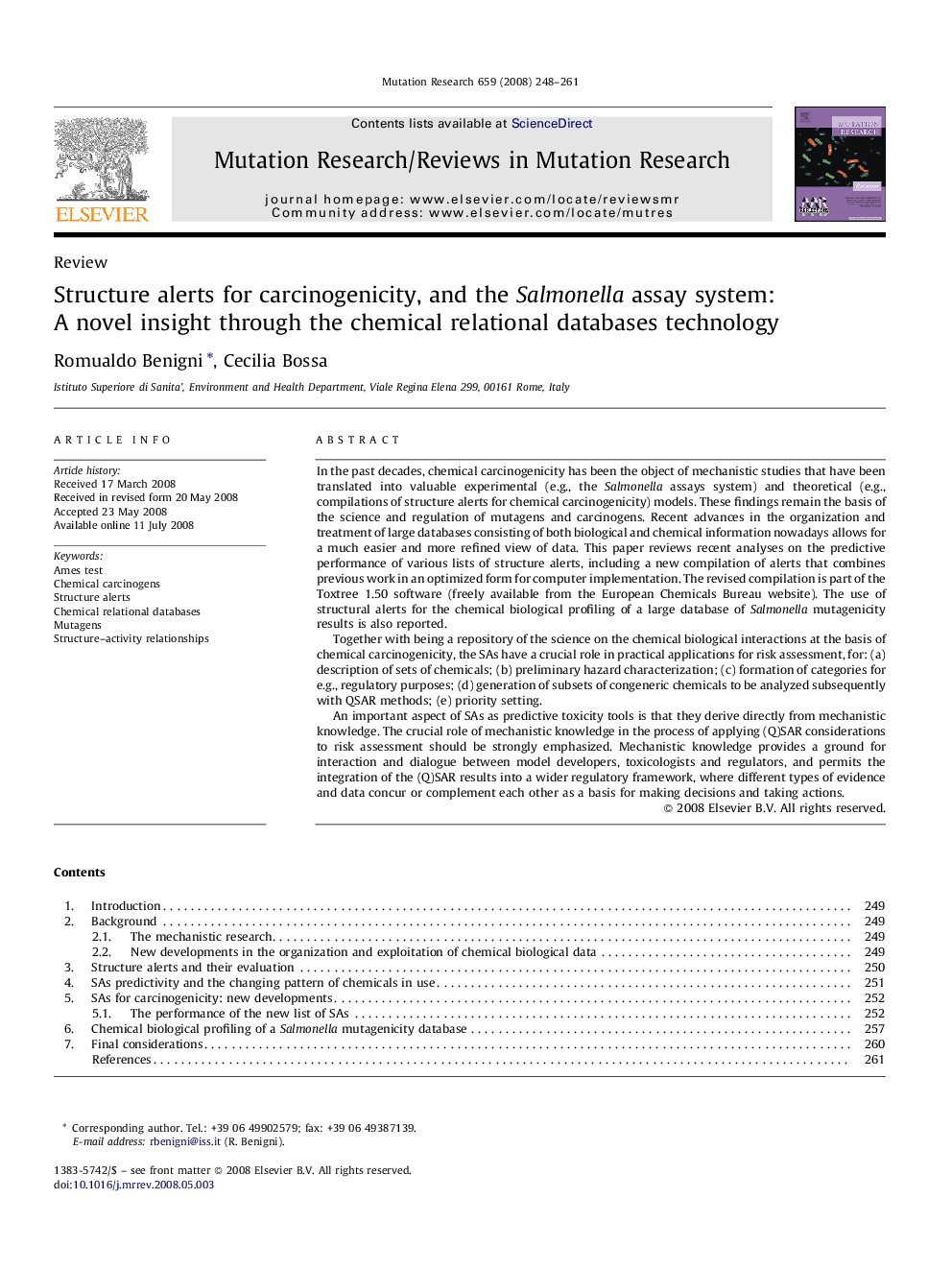| کد مقاله | کد نشریه | سال انتشار | مقاله انگلیسی | نسخه تمام متن |
|---|---|---|---|---|
| 2149737 | 1089879 | 2008 | 14 صفحه PDF | دانلود رایگان |

In the past decades, chemical carcinogenicity has been the object of mechanistic studies that have been translated into valuable experimental (e.g., the Salmonella assays system) and theoretical (e.g., compilations of structure alerts for chemical carcinogenicity) models. These findings remain the basis of the science and regulation of mutagens and carcinogens. Recent advances in the organization and treatment of large databases consisting of both biological and chemical information nowadays allows for a much easier and more refined view of data. This paper reviews recent analyses on the predictive performance of various lists of structure alerts, including a new compilation of alerts that combines previous work in an optimized form for computer implementation. The revised compilation is part of the Toxtree 1.50 software (freely available from the European Chemicals Bureau website). The use of structural alerts for the chemical biological profiling of a large database of Salmonella mutagenicity results is also reported.Together with being a repository of the science on the chemical biological interactions at the basis of chemical carcinogenicity, the SAs have a crucial role in practical applications for risk assessment, for: (a) description of sets of chemicals; (b) preliminary hazard characterization; (c) formation of categories for e.g., regulatory purposes; (d) generation of subsets of congeneric chemicals to be analyzed subsequently with QSAR methods; (e) priority setting.An important aspect of SAs as predictive toxicity tools is that they derive directly from mechanistic knowledge. The crucial role of mechanistic knowledge in the process of applying (Q)SAR considerations to risk assessment should be strongly emphasized. Mechanistic knowledge provides a ground for interaction and dialogue between model developers, toxicologists and regulators, and permits the integration of the (Q)SAR results into a wider regulatory framework, where different types of evidence and data concur or complement each other as a basis for making decisions and taking actions.
Journal: Mutation Research/Reviews in Mutation Research - Volume 659, Issue 3, September–October 2008, Pages 248–261